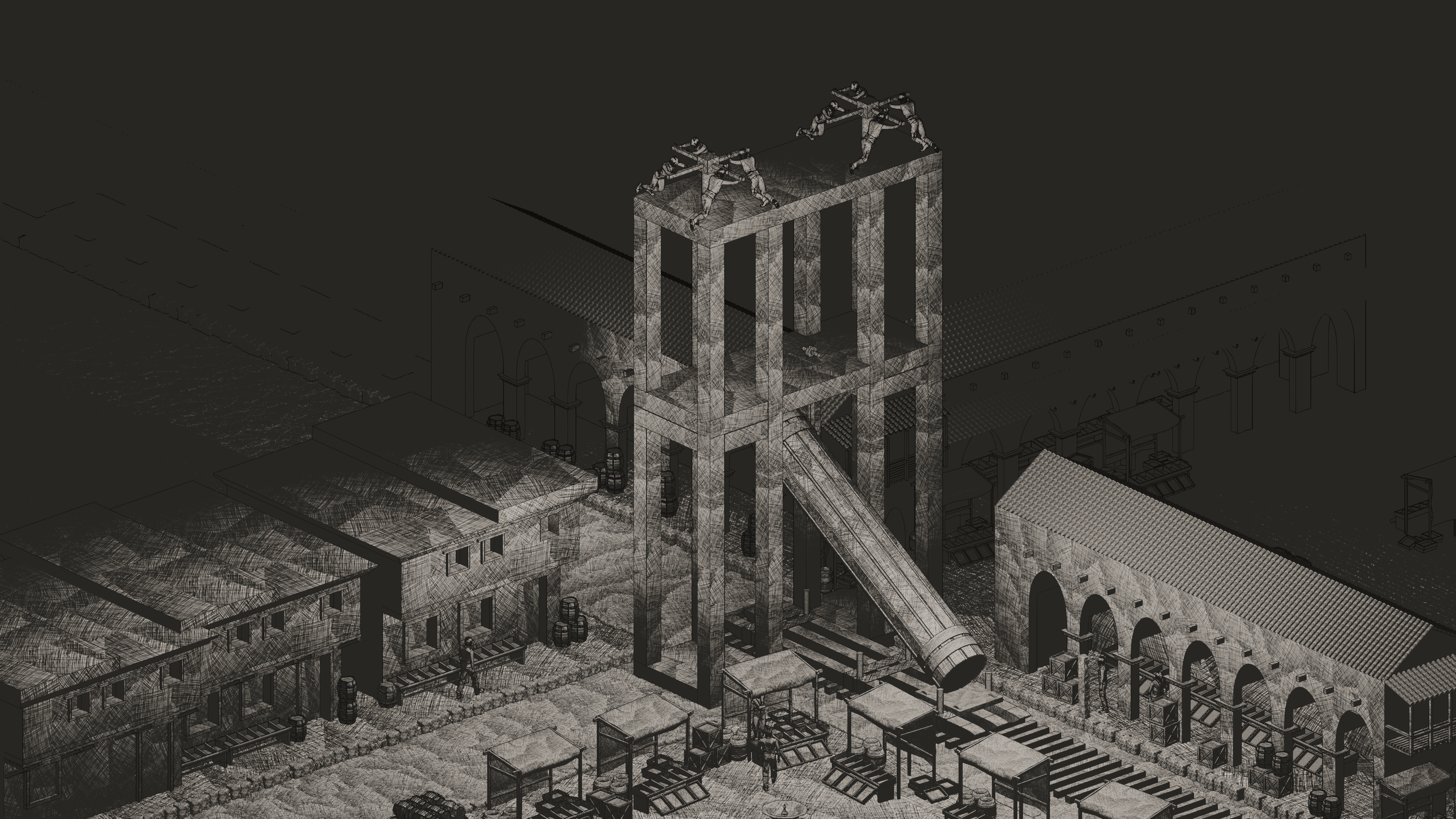Sharp turns:
Rotating the machine
Historians reconstructing transportation routes for Roman columns, like Via Lata and the Forum Boarium route, favored wide streets but faced challenges with sharp 90-degree turns. Traditional carts and sledges could not navigate these corners due to the column's elongated shape and straight-line movement of oxen teams. To solve this, early modern architect-engineers developed machines that could raise the column vertically and then lower it around corners, allowing safe passage through these routes.

While raising the column vertically was possible, it was not suitable for transportation due to instability. Some suggested using this method for tasks like replacing the Vatican obelisk, but Fontana's approach was unique. His method involved both raising and lowering the column in the same location, eliminating the need for horizontal movement.
Animation
This method, explained in the passage, resembles the previous "elevations: the swing principle" but with notable differences. After dismantling the machine while the column rests on supportive blocks, it is reassembled in a position rotated by 90 degrees. This new orientation facilitates lowering the column in the opposite direction of the street. The need for a debris pile is eliminated, and various machines can now be used for this operation, allowing flexibility in transporting columns of varying sizes. Machines depicted on folios 8R, 15R, 14V, 30V, 56R, 57R, and 57R are all considered viable options.